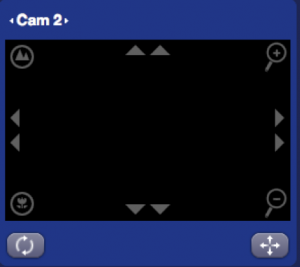Event Keywords
An event is defined as a keyword that identifies the event type, usually followed by one or more parameters and conditional operators. Every keyword uses a specific syntax that interprets parameters according to its own rules.
Contents
System Events
DAY
HAACTIVE
HSYCOSTART
NIGHT
POWER
PROGRAMTIMER
SUNAZIMUTH
SUNELEVATION
TIME
Cameras
CAMERA
This event is true while HSYCO is recording video from a specific camera.
Recording could start automatically when a camera notifies a recording request with the recording HTTP API call:
http://192.168.0.50/x/camerarec?camera=name http://192.168.0.50/x/camerarec?camera=name&zone=id
Recording can also be triggered by the CameraRecTrigger() Java call or the CAMERAREC or CAMERARECFULL actions in EVENTS.
| Event | State | Description |
| CAMERA name | stable | the camera is recording |
| CAMERA name = zone | transient | transient event triggered by a camera recording request with zone information |
Parameters:
- name - the camera id
- zone - the zone id.
Examples:
CAMERA entrance
CAMERACOMMAND
Triggered by a camera control input from the Web interface.
It can be used to execute arbitrary actions when the user clicks on the active areas of the camera view.
| Event | State | Description |
| CAMERACOMMAND name = function | transient | if this event has a positive match in EVENTS, the standard PTZ command associated to the camera’s PTZ driver is not executed |
Parameters:
- name - the camera id
- function - see the table below.
|
Examples:
CAMERACOMMAND entrance = focusfar
CAMERAVIEW
This event is used to check if HSYCO is currently displaying the real-time video from a camera.
The event will reset to off when no Web client has been loading images from the camera for several consecutive seconds.
| Event | State | Description |
| CAMERAVIEW name = status | stable | the camera real-time view status |
Parameters:
- name - the camera id
- status - set to “on” or “1” to match the event when HSYCO is displaying the live view, and to “off” or “0” to match the event when HSYCO is not displaying a live view of the camera on any client.
Examples:
CAMERAVIEW entrance = on
DMX
DMX
Events on the DMX bus channels.
| Event | State | Description |
| DMX address | transient | any change to the channel value |
| DMX address = ON | stable | channel value > 0 |
| DMX address = OFF | stable | channel value = 0 |
| DMX address = value
DMX address > value DMX address < value DMX address >= value DMX address <= value |
stable | the channel value is equal, greater, greater or equal, less, less or equal to the given value.
Valid values are numbers between 0 and 255 |
Parameters:
- address - when using one DMX gateway, address will be a standard DMX-512 address between 1 and 512. If there is more than one gateway, 1000 must be added to the DMX address for the second gateway, 2000 for the third one and so on. For example, 2100 stands for the address 100 on the DMX bus controlled by the third gateway.
Examples:
DMX 100 = ON DMX 1200 = OFF DMX 135 = OFF OR DMX 100 > 50 DMX 41 <= $LEVEL
DMXSTART
This event is triggered when starting the monitor threads for each DMX bus, once per bus at the start of the execution of HSYCO, and also after every restart of the monitor thread.
| Event | State | Description |
| DMXSTART busid | transient | occurs when HSYCO connects to the DMX gateway.
HSYCO establishes the connection at start-up. If the gateway is turned off and then on, or if communication errors occur, HSYCO automatically re-establishes the connection as soon as possible, calling this event in case of success |
Parameters:
- busid - the id of the DMX gateway. The first gateway has address 0. The second has address 1, etc. busid can be omitted if 0.
Examples:
DMXSTART: DMX 100-200 = OFF DMXSTART 1: DMX 1100-1200 = OFF
Infrared Control
IR
I/O Servers
IO
Triggered by a status change of any data port of an I/O server.
| Event | State | Description |
| IO name | transient | any change of an I/O variable |
| IO name = value IO name > value |
stable | the value is equal, greater, greater or equal, less, less or equal to the given value.
|
Parameters:
- name - the data point name of the input or output port. According to the type of server, the format changes but it generally appears as server name, as declared with the ioServers parameter in hsyco.ini, followed by a dot and the input/output port name. See the Application Notes for more information.
Examples:
IO tempmeter.indoor > 25.5 IO contacts.c1 = 1
IOSTART
This event indicates that the connection with an I/O server has been correctly established.
It should be safe to associate this event with actions that set the I/O server writable variables.
| Event | State | Description |
| IOSTART id | transient | Triggered by the start of the communication thread of each I/O server - once for each server at the beginning of the execution of HSYCO, and also after every reboot of the communication thread, for example after communication errors |
Parameters:
- id - the I/O server number, starting from 0, based on the listing order of the ioServers parameter in hsyco.ini; If only one I/O server is available, it can be omitted.
Examples:
IOSTART: IO contacts.c1 = 1 IOSTART 2: IO relays.door = 1








